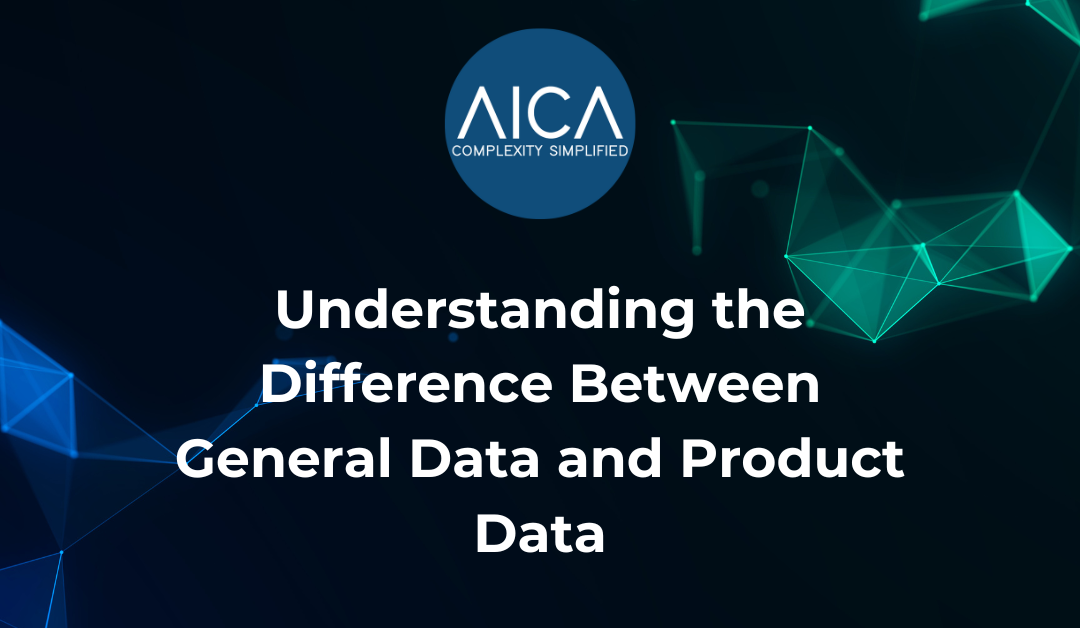Organisations manage vast amounts of information, yet not all data holds the same value or purpose. Distinguishing between general data and product data is essential for optimising business operations and making informed decisions. While general data encompasses broader business metrics like customer information, financial records, and operational insights, product data zeroes in on the attributes and characteristics of the products an organisation sells, uses, or manages.
General Data: The Broader Business Picture
General data provides a high-level view of an organisation’s performance and typically includes:
- Customer Information: Details such as contact information, demographics, and purchase history that enable customer relationship management.
- Financial Data: Metrics like revenue, expenses, and profit margins, crucial for assessing financial health.
- Operational Data: Workforce metrics, supply chain details, and service performance indicators that help optimize internal operations.
This type of data serves as a foundation for measuring organisational performance, forecasting growth, and enhancing customer retention.
Product Data: A Detailed View of Inventory
Product data focuses exclusively on the items within an organisation’s inventory. It provides the granular details needed to manage inventory effectively, ensure compliance, and enhance customer satisfaction.
Essential Product Data Fields
- Product ID: A unique identifier for each product to prevent duplicates and streamline tracking.
- Product Name: Standardised naming for clear communication across departments and with customers.
- Manufacturer: Supplier or producer details to maintain accurate sourcing records.
- Part Number: A manufacturer’s reference number used for procurement and cross-referencing.
- Description: Comprehensive details about the product’s features, specifications, and use.
- Category: Classification within the inventory system for better organisation and analytics.
- Dimensions and Weight: Physical attributes critical for shipping, storage, and handling logistics.
- Inventory Levels: Real-time stock data to prevent overstocking or shortages.
- Pricing Information: Details on unit cost, volume discounts, and promotional pricing.
- Compliance Certifications: Regulatory or safety certifications required for legal and operational compliance.
This specialised dataset ensures businesses have a comprehensive understanding of their inventory, supporting operational efficiency and strategic decision-making.
Why the Distinction Between General and Product Data Matters
1. Operational Efficiency
Product data allows businesses to manage inventory more effectively, reducing waste, optimising stock levels, and ensuring fulfillment accuracy. General data, on the other hand, supports broader operational goals, such as improving customer retention or financial planning.
2. Targeted Decision-Making
Product data provides the insights needed to make specific decisions about pricing strategies, supplier selection, and product lifecycle management. These micro-level details complement general data, which focuses on macro-level business trends.
3. Enhanced Customer Experience
Accurate and detailed product data ensures customers receive exactly what they ordered, with the correct specifications and features. This precision fosters trust and satisfaction, strengthening customer loyalty.
AICA’s Role in Managing Product Data
At AICA, we specialize in ensuring your product data is accurate, enriched, and ready to drive business value. Our AI-driven solutions streamline product data management by:
- Cleansing Data: Eliminating duplicates and correcting inconsistencies to maintain clean, reliable datasets.
- Enriching Data: Adding missing attributes, classifications, and descriptions to provide comprehensive product records.
- Standardising Formats: Ensuring consistent naming conventions and formats across the dataset.
With our expertise, we help businesses unlock the full potential of their product data, driving operational excellence and enhancing decision-making capabilities.
Conclusion
Understanding the difference between general data and product data is vital for businesses aiming to streamline operations and enhance customer satisfaction. While general data offers a macro-level perspective on performance, product data dives into the details essential for managing inventory, ensuring compliance, and improving efficiency.
By maintaining clean, enriched, and well-organized product data, organisations can avoid costly errors, optimise processes, and make data-driven decisions.
Ready to transform your product data? Contact AICA today to learn how we can help your organisation unlock its full potential.
Copyright Reserved © AICA Data International Ltd 2024

